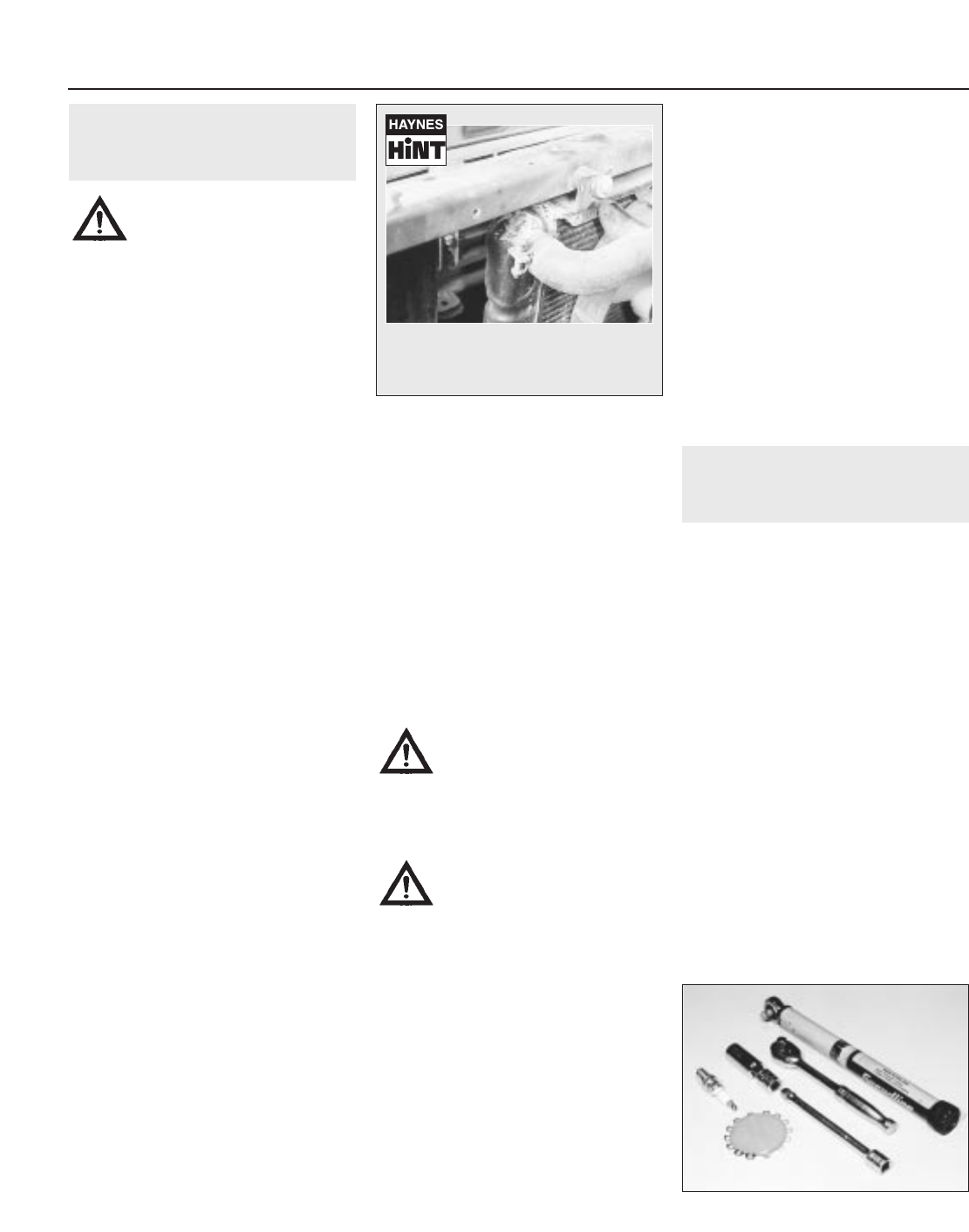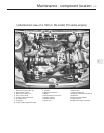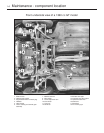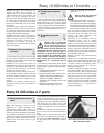
6 Underbonnet check for fluid
leaks and hose condition
1
Warning: Renewal of any air
conditioning hoses (where
fitted) must be left to a dealer
service department or air
conditioning specialist who has the
equipment to depressurise the system
safely. Never remove air conditioning
components or hoses until the system has
been depressurised.
General
1 High temperatures in the engine
compartment can cause the deterioration of
the rubber and plastic hoses used for engine,
accessory and emission systems operation.
Periodic inspection should be made for cracks,
loose clamps, material hardening and leaks.
2 Carefully check the large top and bottom
radiator hoses, along with the other smaller-
diameter cooling system hoses and metal
pipes; do not forget the heater hoses/pipes
which run from the engine to the bulkhead.
Inspect each hose along its entire length,
replacing any that are cracked, swollen or
shows signs of deterioration. Cracks may
become more apparent if the hose is
squeezed (see Haynes Hint).
3 Make sure that all hose connections are
tight. If the spring clamps that are used to
secure some of the hoses appear to be
slackening, they should be renewed to
prevent the possibility of leaks.
4 Some other hoses are secured to their
fittings with screw type clips. Where screw
type clips are used, check to be sure they
haven’t slackened, allowing the hose to leak.
If clamps or screw type clips aren’t used,
make sure the hose has not expanded and/or
hardened where it slips over the fitting,
allowing it to leak.
5 Check all fluid reservoirs, filler caps, drain
plugs and fittings etc, looking for any signs of
leakage of oil, transmission and/or brake
hydraulic fluid, coolant and power steering
fluid. If the vehicle is regularly parked in the
same place, close inspection of the ground
underneath will soon show any leaks; ignore
the puddle of water which will be left if the air
conditioning system is in use. As soon as a
leak is detected, its source must be traced
and rectified. Where oil has been leaking for
some time, it is usually necessary to use a
steam cleaner, pressure washer or similar, to
clean away the accumulated dirt, so that the
exact source of the leak can be identified.
Vacuum hoses
6 It’s quite common for vacuum hoses,
especially those in the emissions system, to
be numbered or colour-coded, or to be
identified by coloured stripes moulded into
them. Various systems require hoses with
different wall thicknesses, collapse resistance
and temperature resistance. When renewing
hoses, be sure the new ones are made of the
same material.
7 Often the only effective way to check a
hose is to remove it completely from the
vehicle. If more than one hose is removed, be
sure to label the hoses and fittings to ensure
correct installation.
8 When checking vacuum hoses, be sure to
include any plastic T-fittings in the check.
Inspect the fittings for cracks, and check the
hose where it fits over the fitting for distortion,
which could cause leakage.
9 A small piece of vacuum hose can be used
as a stethoscope to detect vacuum leaks.
Hold one end of the hose to your ear, and
probe around vacuum hoses and fittings,
listening for the “hissing” sound characteristic
of a vacuum leak.
Warning: When probing with the
vacuum hose stethoscope, be
very careful not to come into
contact with moving engine
components such as the auxiliary drivebelt,
radiator electric cooling fan, etc.
Fuel hoses
Warning: Before carrying out the
following operation, refer to the
precautions given in “Safety
first!” at the beginning of this
manual, and follow them implicitly. Petrol
is a highly dangerous and volatile liquid,
and the precautions necessary when
handling it cannot be overstressed.
10 Check all fuel hoses for deterioration and
chafing. Check especially for cracks in areas
where the hose bends, and also just before
fittings, such as where a hose attaches to the
carburettor or fuel rail.
11 High-quality fuel line, usually identified by
the word “Fluoroelastomer” printed on the
hose, should be used for fuel line renewal.
Never, under any circumstances, use
unreinforced vacuum line, clear plastic tubing
or water hose for fuel lines.
12 Spring-type clamps are commonly used
on fuel lines. These clamps often lose their
tension over a period of time, and can be
“sprung” during removal. Replace all spring-
type clamps with screw clips whenever a hose
is replaced.
Metal lines
13 Sections of metal piping are often used
for fuel line between the fuel filter and the
engine. Check carefully to be sure the piping
has not been bent or crimped, and that cracks
have not started in the line.
14 If a section of metal fuel line must be
renewed, only seamless steel piping should
be used, since copper and aluminium piping
don’t have the strength necessary to
withstand normal engine vibration.
15 Check the metal brake lines where they
enter the master cylinder and ABS hydraulic
unit for cracks in the lines or loose fittings.
Any sign of brake fluid leakage calls for an
immediate and thorough inspection of the
brake system.
7 Spark plug renewal
2
1 The correct functioning of the spark plugs is
vital for the correct running and efficiency of
the engine. It is essential that the plugs fitted
are appropriate for the engine (a suitable type
is specified at the beginning of this Chapter). If
this type is used and the engine is in good
condition, the spark plugs should not need
attention between scheduled replacement
intervals. Spark plug cleaning is rarely
necessary, and should not be attempted unless
specialised equipment is available, as damage
can easily be caused to the firing ends.
2 If the marks on the original-equipment spark
plug (HT) leads cannot be seen, mark the leads
“1” to “4”, to correspond to the cylinder the lead
serves (No 1 cylinder is at the transmission end
of the engine). Pull the leads from the plugs by
gripping the end fitting, not the lead, otherwise
the lead connection may be fractured.
3 It is advisable to remove the dirt from the
spark plug recesses using a clean brush,
vacuum cleaner or compressed air before
removing the plugs, to prevent dirt dropping
into the cylinders.
4 Unscrew the plugs using a spark plug
spanner, suitable box spanner or a deep
socket and extension bar (see illustration).
1•10 Every 12 000 miles or 12 months
7.4 Tools required for spark plug removal,
gap adjustment and refitting
A leak in the cooling system will usually
show up as white or rust-coloured
deposits on the area adjoining the leak


















